Introduction
Imagine a place where families, friends, and fitness enthusiasts gather for fun, exercise, and lasting memories. A place that hums with laughter and activity, offering a unique mix of recreational attractions for all ages. Welcome to the world of trampoline parks—a booming industry that’s not only fun but also incredibly profitable. Whether you’re an entrepreneur looking to start a new business or a current business owner seeking to diversify your entertainment options, trampoline parks offer a profitable and fun business opportunity. This comprehensive guide will give you the essential information, industry insights, and practical steps you need to create a successful trampoline park business plan.
The Definition of Trampoline Park
A trampoline park is an indoor facility filled with interconnected trampolines.Trampoline parks offer a variety of activities beyond just jumping and are designed to accommodate all age groups. This makes them popular destinations for birthday parties, corporate events, group outings, and fitness activities. Trampoline parks are filled with padded equipment, safety nets, and trained staff to ensure a safe and enjoyable experience for everyone. Activities often include trampoline dodgeball, trampoline basketball, foam pits, and fitness classes, providing endless fun and fitness opportunities for participants.
What Makes A Trampoline Park Business Necessary?
Trampoline parks are great businesses for several reasons. First, they satisfy kids’ need to play and be active in a safe, controlled environment. For business owners, there are many benefits. Trampoline parks attract a steady stream of customers and offer multiple ways to make money, including admission, party bookings, merchandise sales, and concessions. Trampoline parks create jobs, build communities, and can operate year-round, regardless of the weather. The combination of high demand and multiple revenue opportunities makes trampoline parks a great investment.
Trampoline Park Industry Statistics
The trampoline park industry has grown a lot in the last 10 years. In 2022, the global trampoline park market was worth around $837.8 million. This market is expected to grow at an annual rate of 15.6% from 2023 to 2032 and will be worth $3.57 billion in 2032. There are over 1,500 trampoline parks worldwide, with North America, particularly the United States, accounting for the majority. The U.S. market has grown at an average rate of 5.4% per year from 2018 to 2023 and represents 43.6% of the global revenue. This growth shows that trampoline parks are becoming more popular and in demand all over the world.

Is a Trampoline Park a Good Investment?
Yes. The trampoline park industry is a great opportunity to make money. As I mentioned earlier, the market is expected to grow a lot in the next few years. This growth is driven by the increasing demand for recreational activities, especially among families and kids. Successful trampoline parks can make over $1 million in profit each year, and the average return on investment (ROI) is between 20% and 40%. Because of the high demand, multiple ways to make money, and relatively low costs, trampoline parks are a great investment.
How to Start an Indoor Trampoline Park Business?
Starting a trampoline park business requires careful planning and execution. Here are the steps you need to take:
1. Conduct Market Research
Before you dive in, it’s crucial to understand the market. Analyze local competition, assess the demand in your area, and identify potential customer segments. Understanding the demographics and preferences of your target audience will help you tailor your offerings and marketing strategies.
2. Identify Your Target Customers
Determine who your primary customers will be. While trampoline parks attract people of all ages, you might want to focus on specific groups such as children, teens, families, or fitness enthusiasts. The target audience of your trampolin park will determine the type of trampoline park attractions and indoor layout you need to purchase.
3. Create a Detailed Business Plan
You need a detailed business plan to make your trampoline park a success. Your plan should include:
- Market analysis
- Business objectives
- Startup costs and funding requirements
- Revenue projections
- Marketing strategies
- Operational plans
- Risk management plans
4. Find a Suitable Location
Where you put your trampoline park is important. You need a place that’s easy to find, has lots of parking, and is the right size for what you want to do. You also need to think about things like how many people are going to see your place, how many cars drive by, and what other entertainment businesses are close to you. This can be family entertainment centers, amusement parks, fitness centers, gyms, sport facilities, shopping centres, commercial venues, and more.
What is the Ceiling Height Required for a Trampoline Park?
The ceiling height is a big deal when it comes to designing a trampoline park. According to the ASTM F2970 Standard, the lowest thing on your roof has to be 204 inches (518.16 cm) off the ground, which is about 5.2 meters. This height makes sure that people can jump and not hit the ceiling or other stuff up top.
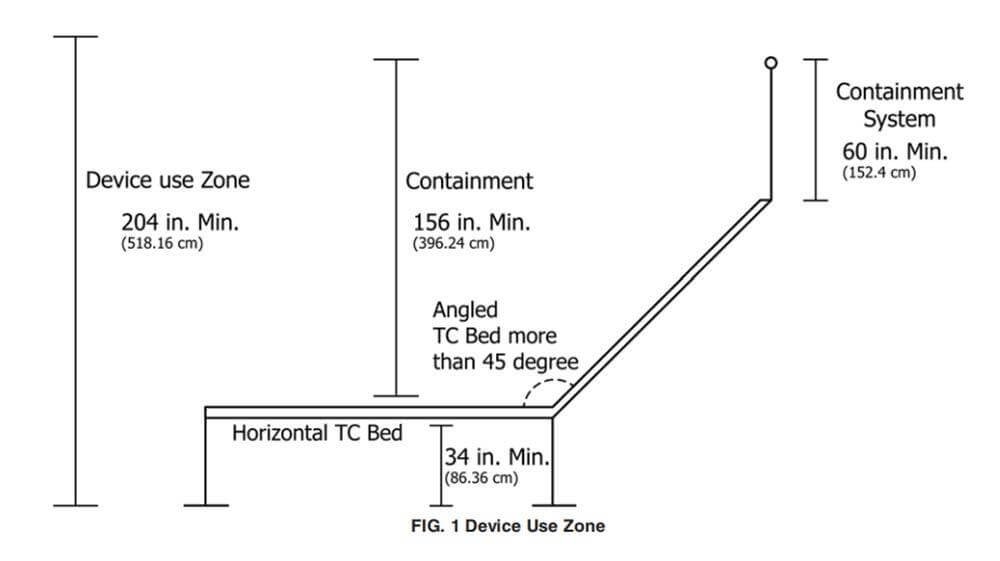
If you want to have the high-performance olympic trampolines, then your ceiling height should be at least 6.2 meters so that people don’t jump too high and hit the ceiling.
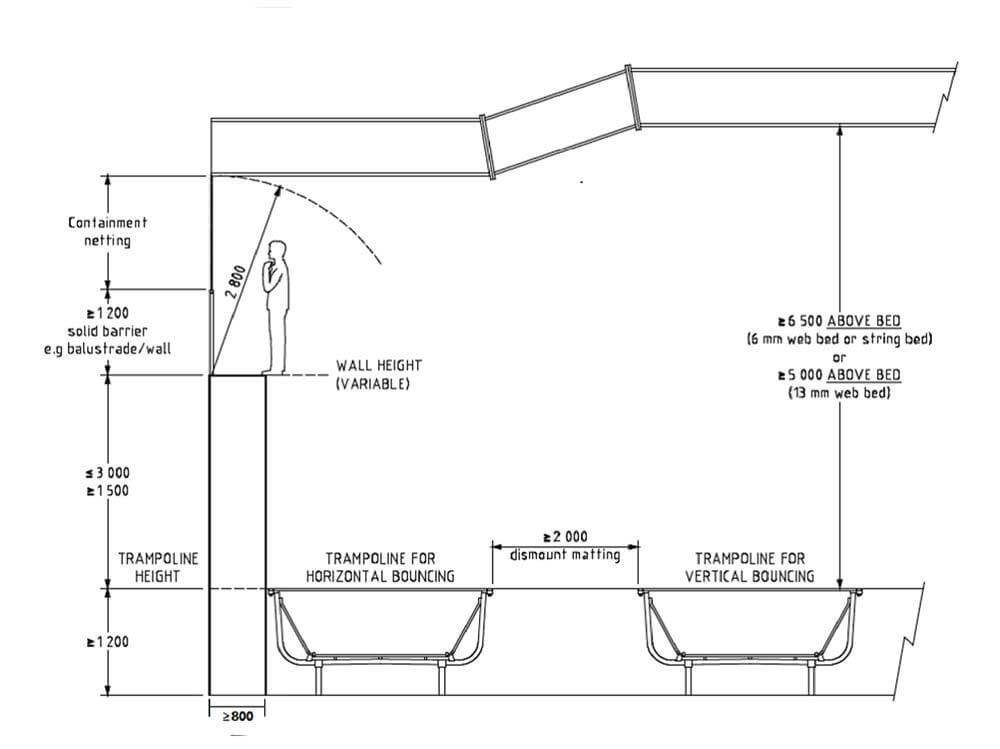
5. Design Your Indoor Trampoline Park
This must begin once you have determined the exact venue. Work with professional designers and architects to create a layout that maximizes space and ensures safety. Your design should include areas for different attractions, seating for spectators, party rooms, restrooms, or food & drink area.
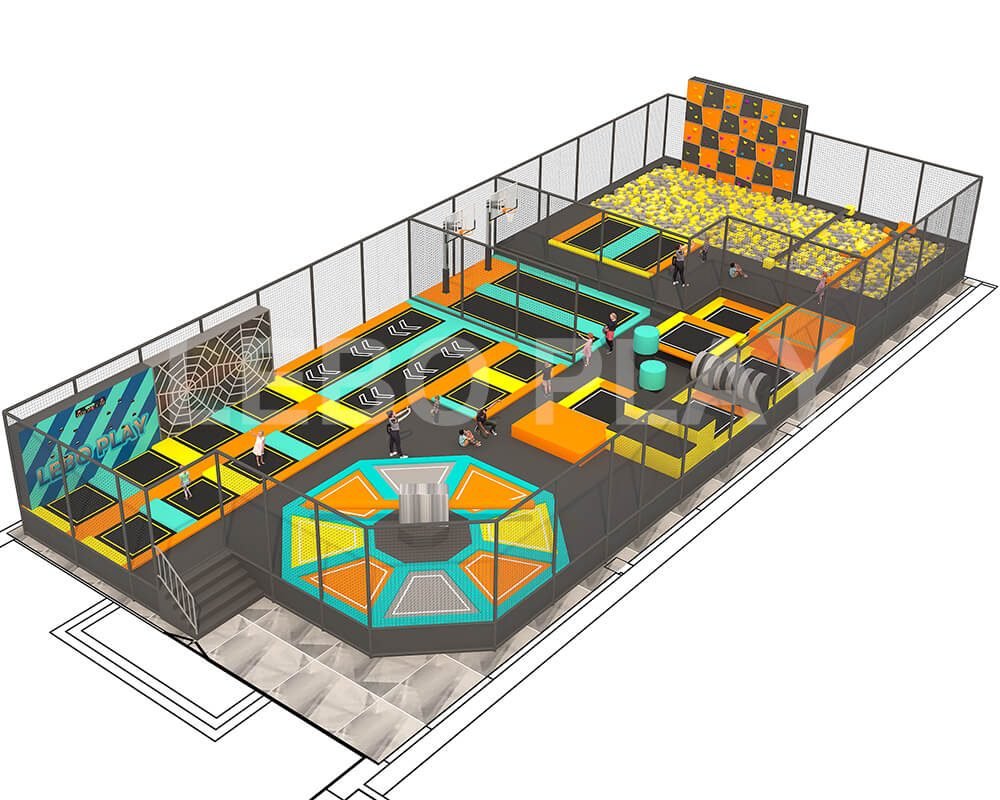
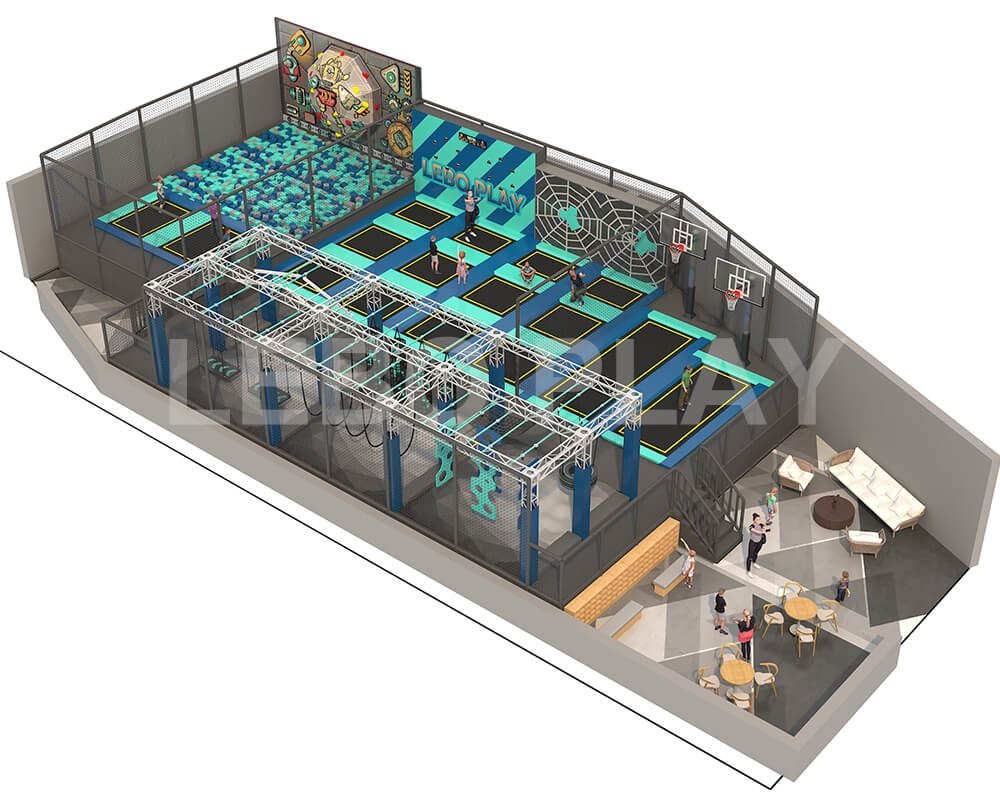
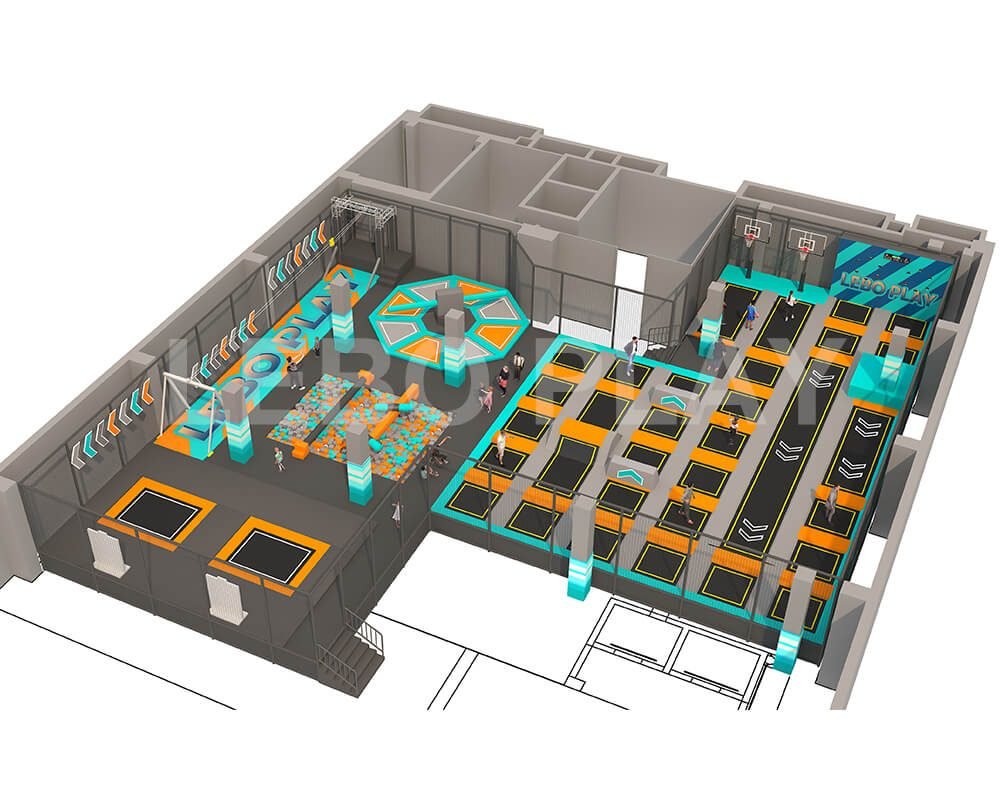
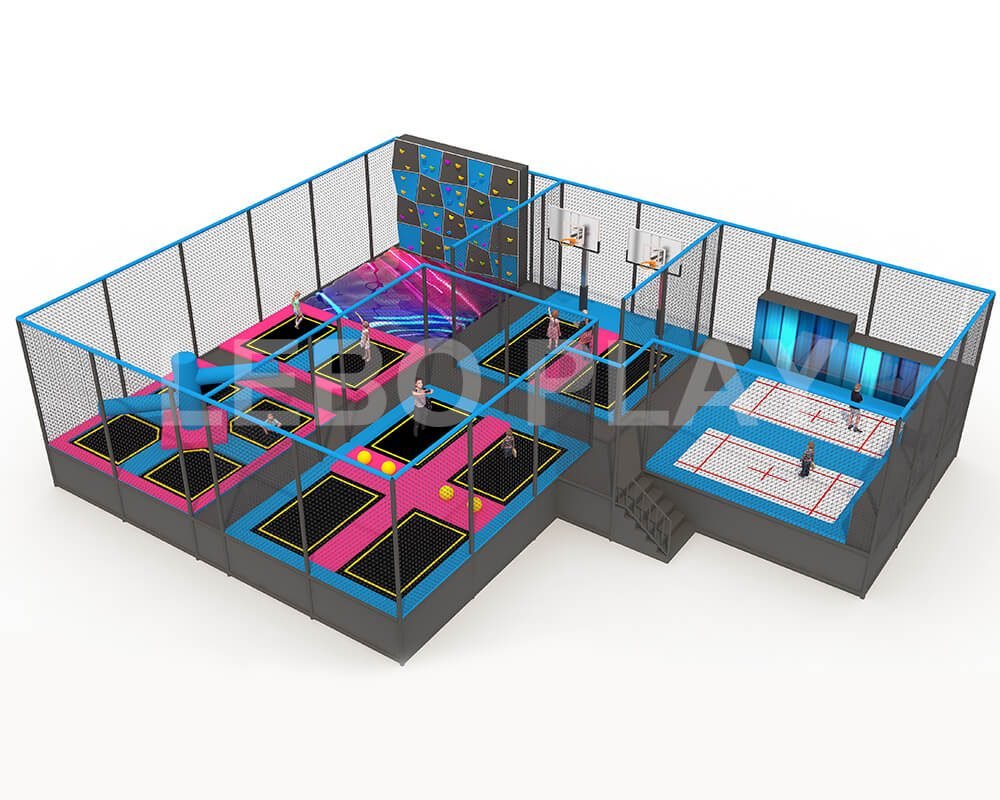
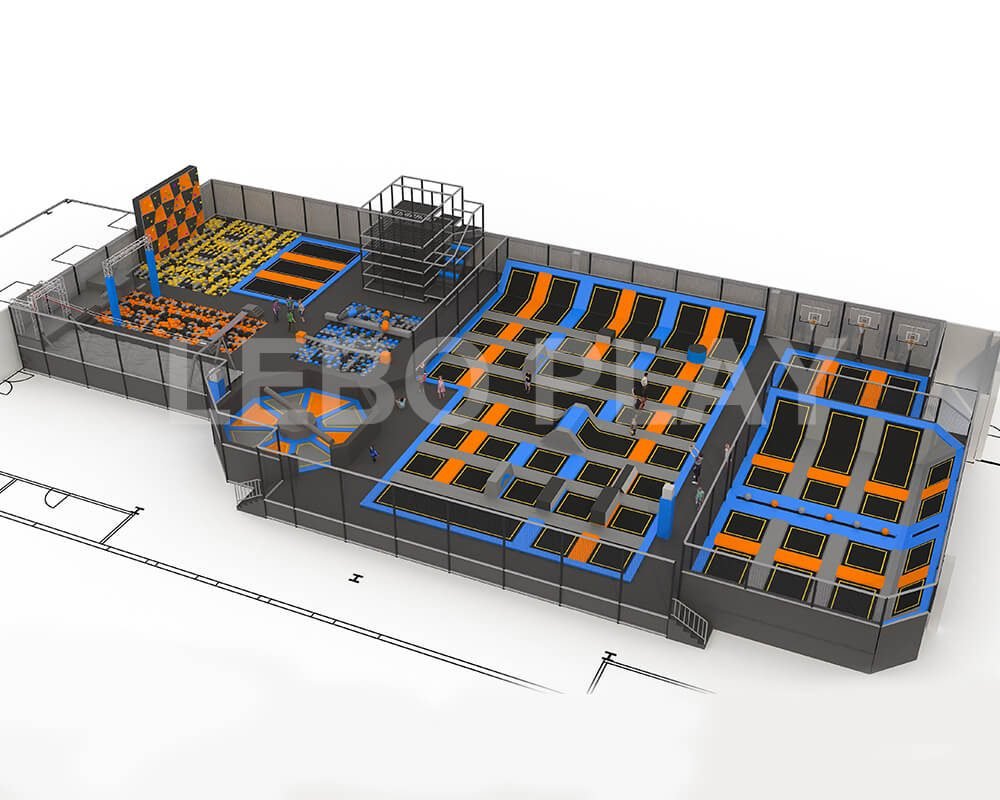
How Deep Can Gymnastic/Trampoline Park Foam Pits Get?
As per the ASTM F2970 Standard, the minimum depth required for foam pits is 60 inch. (152.4 cm). and it is only permitted to dismount into a foam pit from normal trampolines, NOT allowed from high performance trampolines/Olympic trampolines.
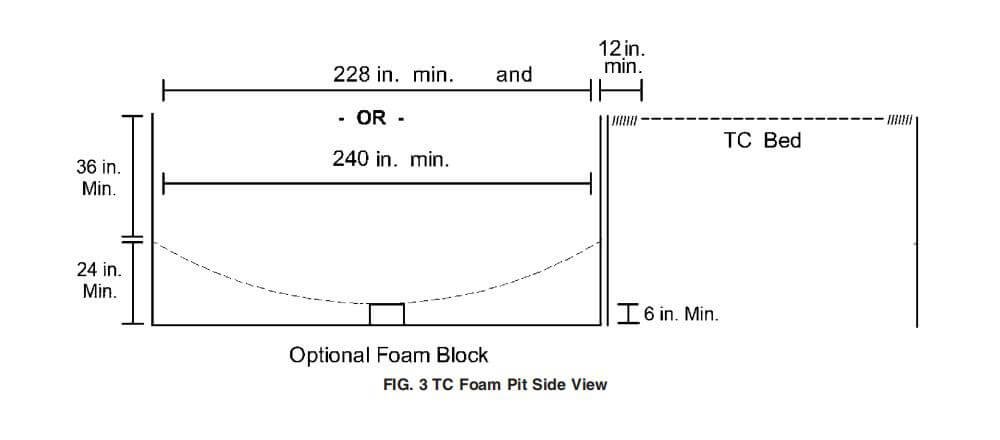
6. Purchase Trampoline Park Equipment
Buy good trampolines that are safe. Make sure you buy them from people who know what they’re doing and can help you put them up and keep them working. Make sure the trampoline park equipment you buy are strong, safe, and right for the people who are going to use them.

Common Attractions in Trampoline Parks
Trampoline parks offer a variety of attractions to keep visitors entertained and engaged. Here are some of the most popular features:
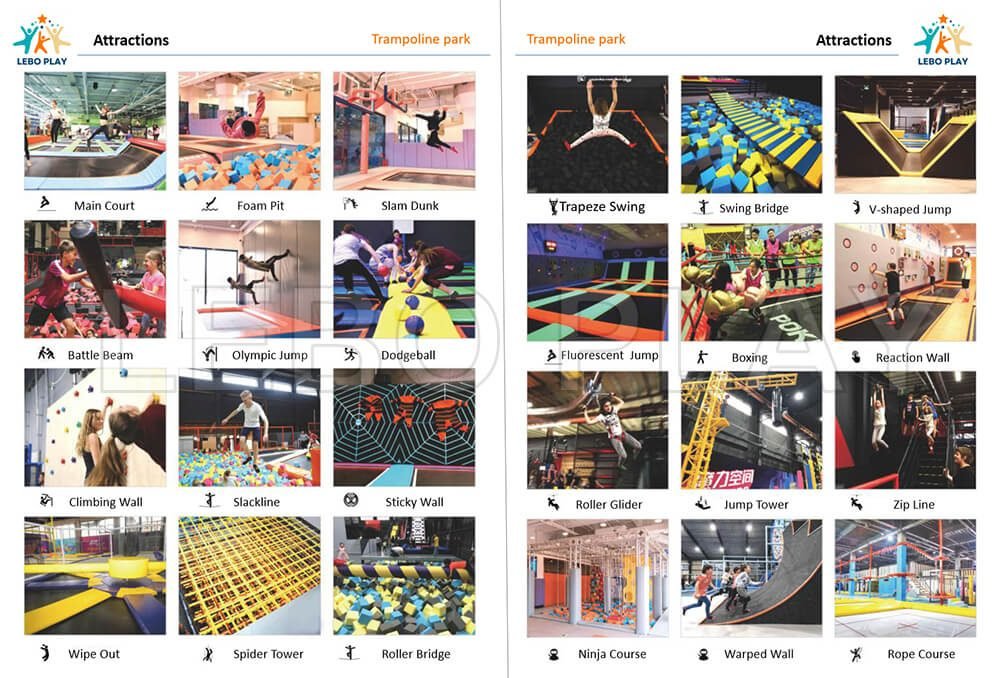
7. Obtain Necessary Permits and Insurance
Trampoline parks need to follow the rules for where they are. You need to get the right papers to do your business. You also need to buy insurance to make sure you don’t get in trouble if something bad happens.
8. Hire and Train Staff
Your staff will play a crucial role in ensuring the safety and satisfaction of your customers. Hire qualified and enthusiastic individuals, and provide thorough training on safety procedures, customer service, and equipment operation.
9. Create a Marketing Plan
You’ve done everything you need to do, but remember that you have to tell people your trampoline park is open. They won’t just show up because you want them to. You need to make sure that people know about your trampoline park and that they come to see it. You can do this in a lot of ways, including:
- Design a logo for your new trampoline park to make it more representative.
- Create an appealing website with photos, program descriptions, pricing, and easy online reservations system.
- Establish social media accounts and publish content related to trampoline parks, sharing engaging content such as photos, videos, and updates about your park.
- Use online ads and social media ads to reach specific customer segments.
- Partner with travel agents, social media influencers, and bloggers to extend your reach.
- Send flyers or post advertisements around the indoor playground to attract potential customers nearby.
- Sell branded items such as trampoline socks, T-shirts, wristband, and water bottles featuring your park’s logo.
10. Launch and Continually Optimize Your Business
When everything is ready, you need to tell people your trampoline park is open. You need to plan a big party to tell people about your trampoline park and get them to come see it. You also need to keep asking people what they think of your trampoline park and do things to make it better for them and better for you.
Are Trampoline Parks Only for Kids?
Absolutely not! Trampoline parks are for people of all ages, from little kids to old people. While they are popular among kids, trampoline parks also offer numerous activities and benefits for adults. Many trampoline parks have trampoline fitness classes, trampoline dodgeball, and trampoline basketball that are popular with teenagers and adults. Trampoline parks are also great for company parties, team-building events, and people who like to work out and have fun at the same time. There are so many things to do at a trampoline park that people of all ages can have fun there.
Do Trampoline Parks Have Weight Limits?
Yes, trampoline parks typically have weight limits to ensure the safety of all participants. Most places set the limit at about 250-300 pounds. This is to make sure people don’t get hurt and that the trampolines last a long time. It’s important to tell people about these rules and make sure they follow them so that your trampoline park is a safe place to jump.
How to Ensure Your Trampoline Park’s Safety?
Safety is the most important thing in a trampoline park. Here’s what you need to do to make sure your customers are safe:
1. Supervision
You need to employ trained staff who know how to watch what’s going on and make sure people are following the rules. They also need to know how to get help if someone gets hurt.
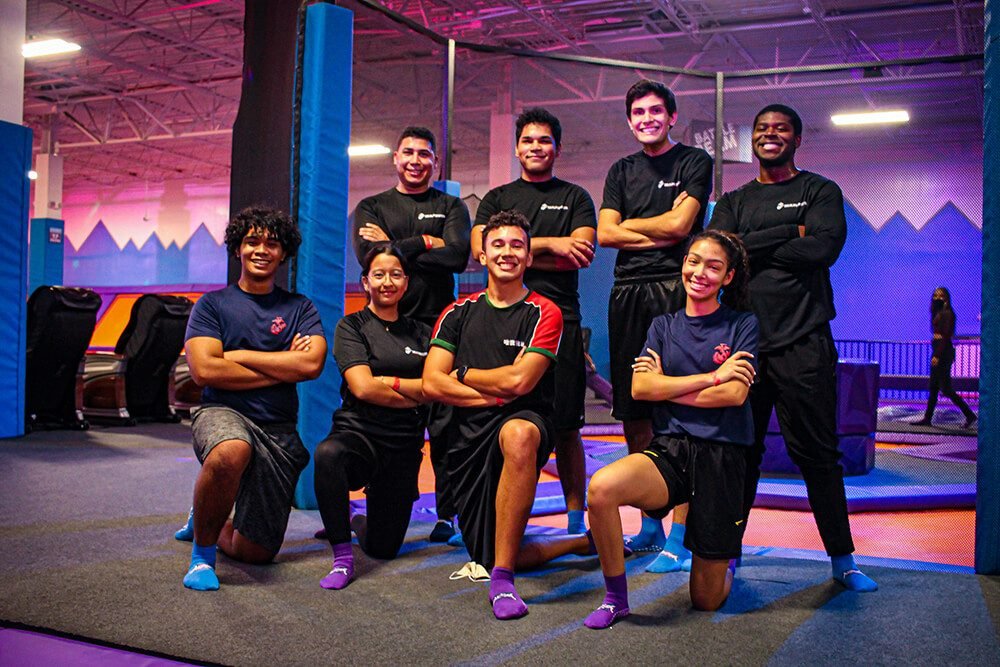
2. Proper Attire
You need to tell your customers to wear the right clothes and the right socks so they don’t slip and get hurt.
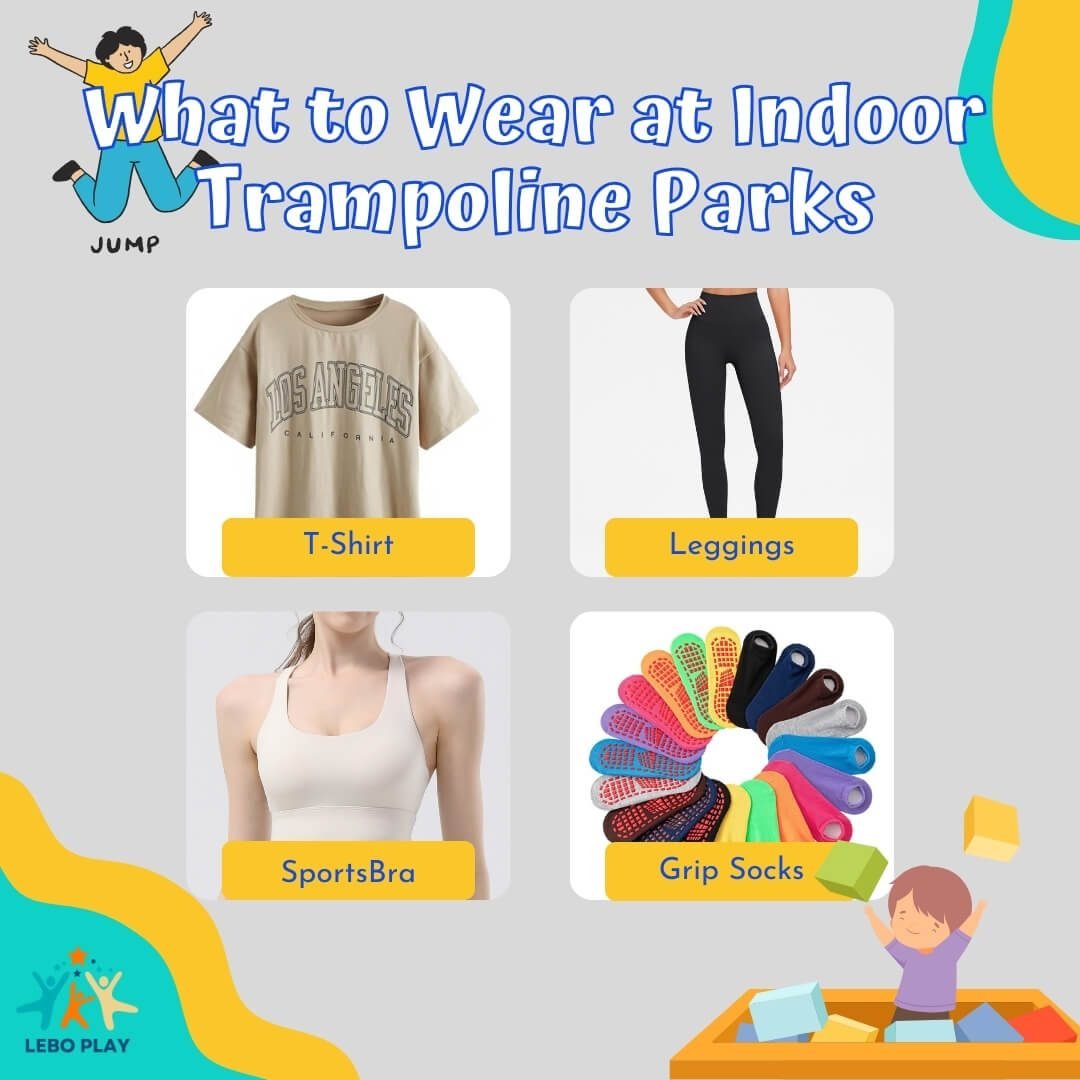
3. Warm-Up Exercises
You need to tell your customers to do some warm-up exercises before they start jumping so they don’t get hurt.
4. Limit Capacity
You need to control the number of players in your trampoline park to prevent overcrowding and collisions.
5. Age and Weight Restrictions
You need to implement and enforce age and weight restrictions to ensure the safety of all participants.
6. Routine Inspection
You need to conduct regular inspections of equipment and facilities to identify and address potential safety hazards
7. Emergency Preparedness
You need to have a clear emergency plan in place, including first aid kits, trained staff, and procedures for handling injuries and emergencies.
8. Safety Equipment
You need to purchase high quality safety trampoline park equipment that meets standards.
Trampoline Parks Rules and Regulations
Making rules and making sure people follow them is important to keep your trampoline park a safe place to jump. Here are some rules you need to have:
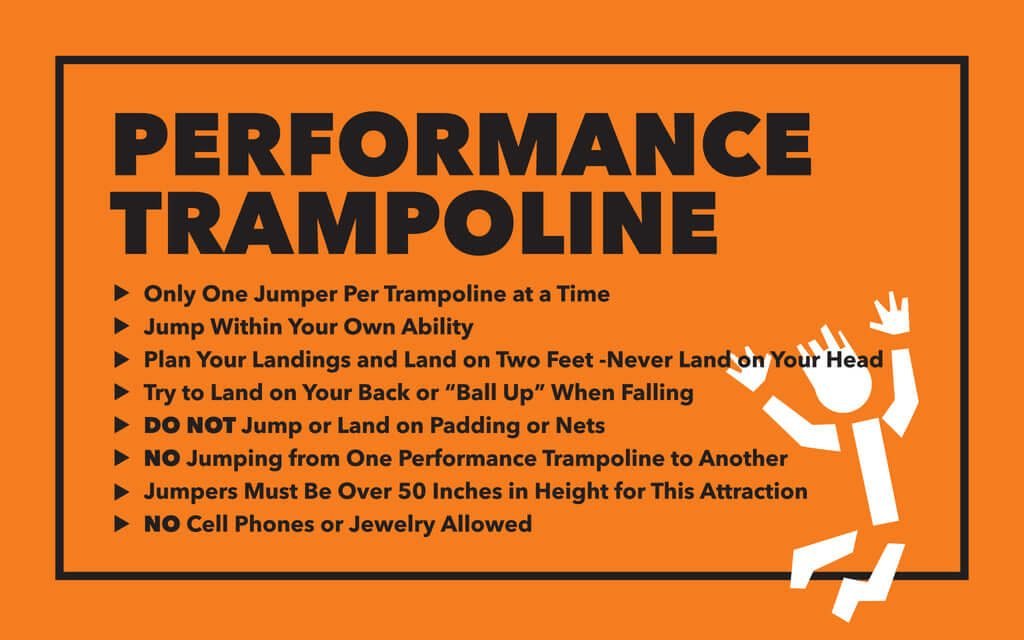
- Always follow all park rules and staff instructions.
- One person per trampoline at a time.
- Remove street shoes and wear approved grip socks.
- Empty pockets and remove jewelry before jumping.
- Always jump and land on two feet.
- Bend knees when landing to absorb impact.
- No double bouncing or affecting another jumper’s bounce.
- No sitting, lying down, or running on trampolines.
- No flips or dangerous tricks beyond your skill level.
- No food, gum, or objects in the mouth while jumping.
- Follow specific rules for foam pits, performance walls, and other attractions.
- Restrictions on players’ age and weight.
- Maintain a distinction between play and recreation areas. Keep play areas clean and safe by prohibiting snacks and beverages.
- Participants typically must sign waivers acknowledging risks.
Ways to Maintain Your Jump Trampoline Park
Before you open your trampoline park every day, you need to walk around and look at everything to make sure it’s okay. You need to check things like:
- The condition of springs for any damage, rust or loss of tension
- The jumping mats for scratches, cracks or damage
- The safety padding to ensure it is properly fitted and undamaged
- The trampoline frames for damage and that all screws are tight
- Emergency exits
Regular Cleaning:
Thoroughly clean the trampolines regularly, using a vacuum cleaner on the surface and a damp cloth on the jumping mats.
Also clean other areas like dodgeball nets, video games, climbing walls, etc. that can get dusty.
For the foam pit, remove all blocks, clean the surface, check block condition, and refill to the minimum height with undamaged blocks evenly distributed.
Ways to Improve Your Trampoline Parks
If you want to keep your trampoline park competitive and exciting, try these upgrades:
- Add a Café or Snack Bar – By giving your guests a place to sit and re-energize, you can make more money and make the experience better. A café or snack bar gives them something to drink and nibble on, so they’ll stay longer.
- Sell Branded Merchandise – Make your trampoline park more memorable by selling branded merchandise with your logo like T-shirts, grip socks, water bottles, and other items. This will make you more money and help promote your business as people wear and use your branded products.
- Have Holiday Events – Create special events for holidays and other times of the year to get more people to come in. These events can include special decorations, activities, and promotions that will drive traffic and get people involved.
- Start a Referral Program – Start a referral program where your current customers can refer new people and get discounts or prizes. This will help you keep the customers you have and get new ones to come in.
Appropriately Add or Adjust Attractions –
Regularly update and add new attractions or themes to keep the park exciting. Don’t let your park get stale and boring. Fresh attractions and seasonal themes will keep visitors coming back.Establish a Customer Feedback Mechanism –
Create a system for collecting customer feedback and use it to improve your park. Listen to your customers’ suggestions and complaints to make timely and relevant changes that enhance their experience.
- Start Membership Programs – Introduce membership or loyalty programs that offer benefits such as discounts, priority booking for events, and exclusive access to new attractions. Membership programs encourage repeat visits and foster customer loyalty.
Conclusion
After reading this ultimate guide, you should have a good idea of how to start your trampoline park business. You will go through the processes of doing market research, finding a location, figuring out who your customers are, planning your budget, renting your venue and buying equipment, hiring staff, and advertising your trampoline park.
Still looking for a professional trampoline park supplier? Contact us and let us provide you with professional one-on-one service to turn your indoor park dream into reality. Lebo Play is committed to providing you with a full range of services, from consulting to design to production and installation, we will be your reliable partner. Through careful market research, a well-planned indoor layout, and selected trampoline park equipment, we help you refine your trampoline park business plan. Your trampoline park will become a happy place for children to grow up.

